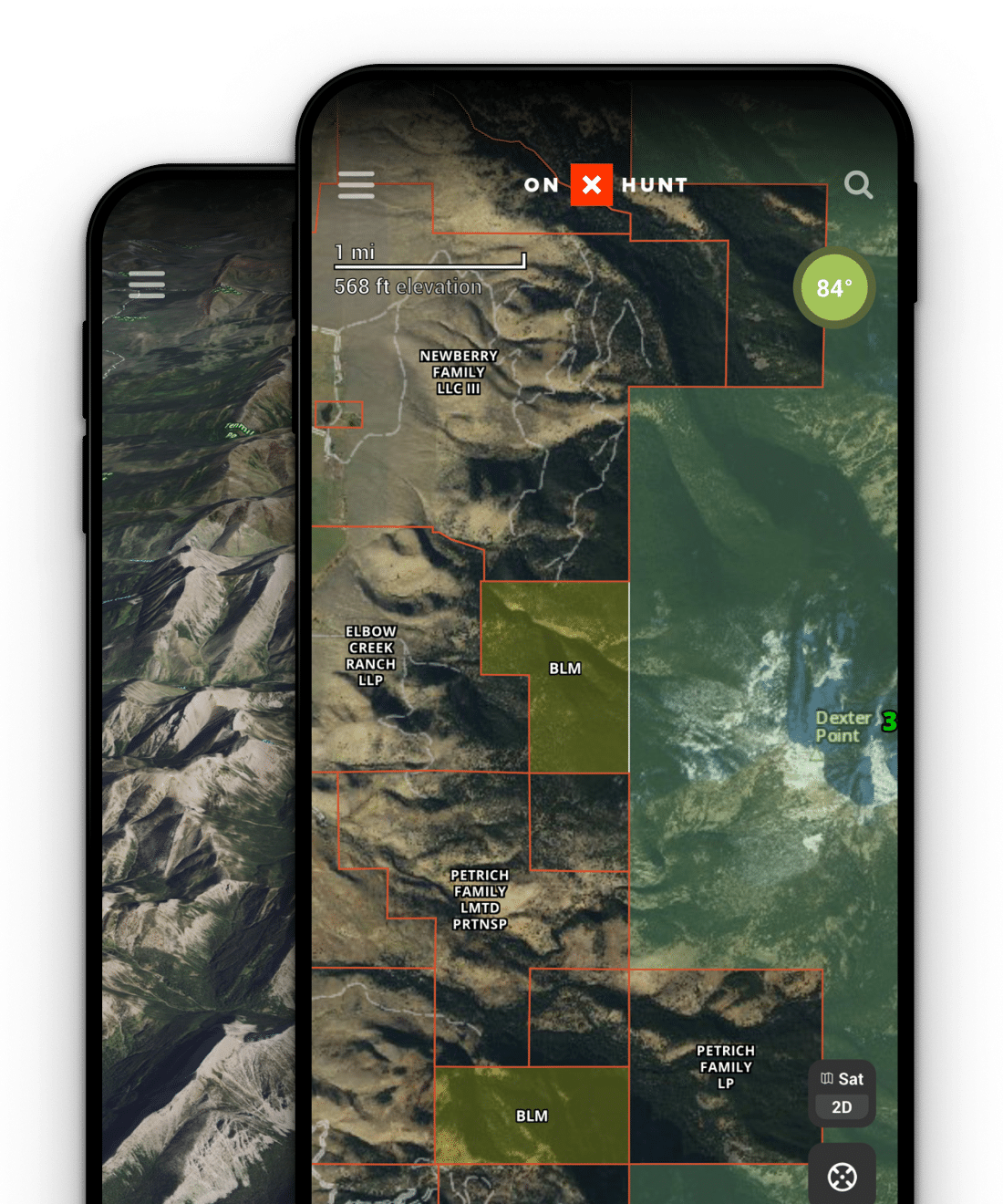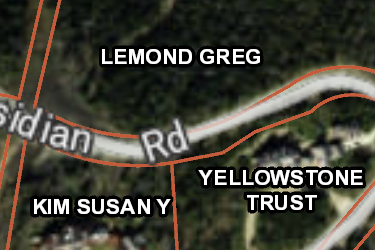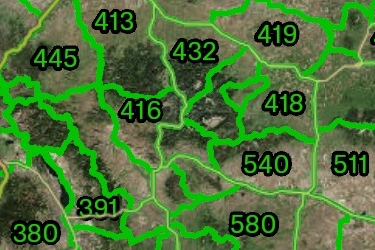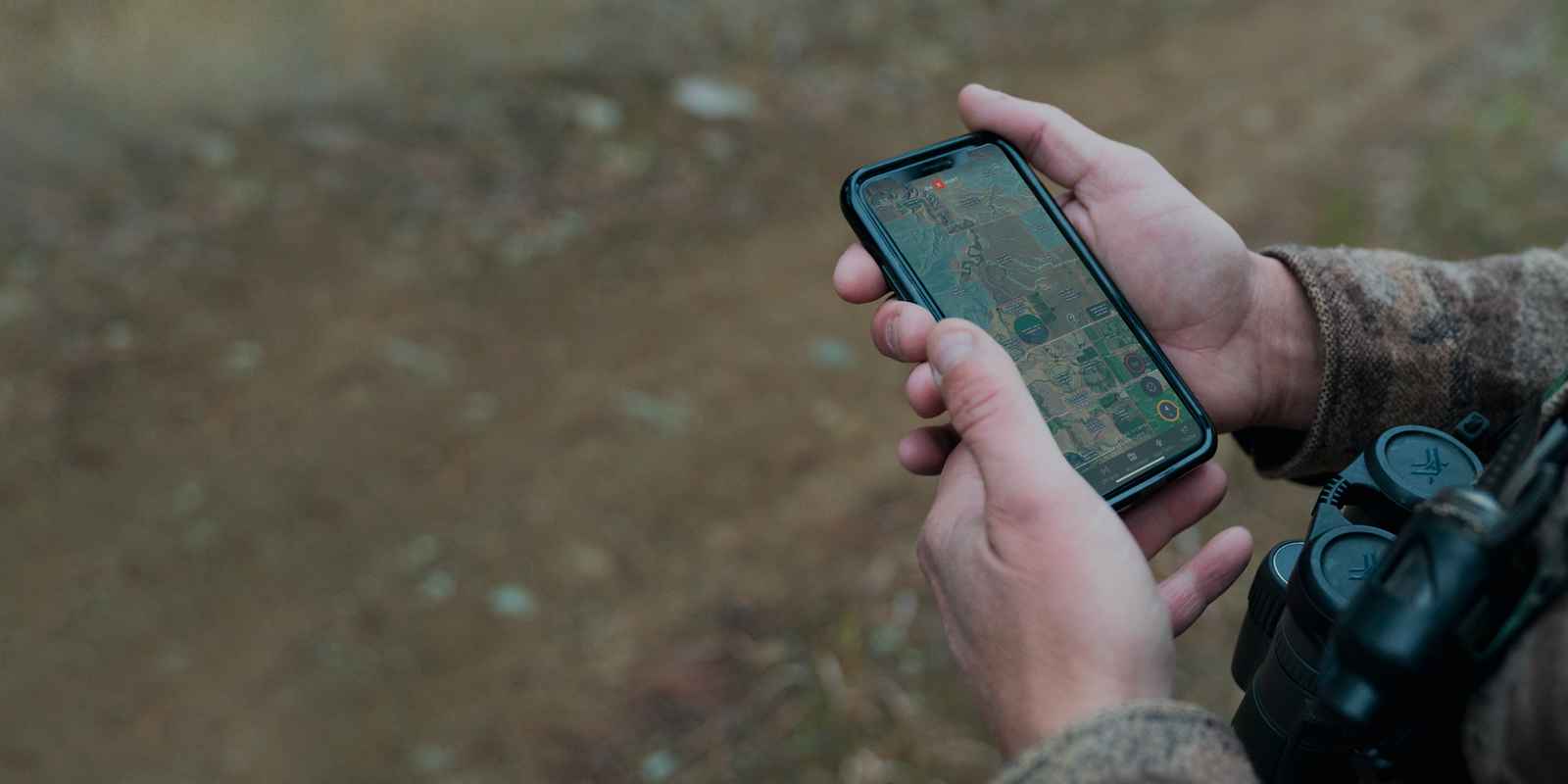Overview
Known For
Missouri is known for whitetail deer and black bear hunting. The state also has hunting seasons for turkey, quail, pheasant, rabbits, squirrels, waterfowl, and other small furbearers. There is a limited area in the state for hunting elk. Missouri is actively managing Chronic Wasting Disease (CWD) in 38 counties. Hunting deer in CWD Management Zones requires testing your harvest at a sampling station.
Terrain
Missouri is mostly rolling hills, fertile plains, and well-watered prairies. Much of its land is 1,000 to 1,400 feet above sea level. The three distinct geographic regions of the state include the Northern Plains, the Ozark Plateau, and the Mississippi Alluvial Plain. Its land area covers 69,715 square miles, making Missouri the 21st largest state in the nation.

Sign up for a 7-day free trial of onX Hunt and unlock, explore, and master all the map tools and features we offer.
Missouri Hunting Seasons
Two deer of either sex. Only one antlered deer may be taken before Nov. 11. An antler-point restriction applies in some counties.
If you harvest a deer from certain counties in the CWD Management Zone during the opening weekend, Nov. 11-12, you must take your deer to a designated CWD sampling station. An antler-point restriction applies in some counties.
Only select counties are open to firearms hunting during the CWD portion. See link to regulations for more details.
Some counties are closed to firearms hunting during these portions. Please check the regulations.
Youth hunters eligible are of the age 6-15 on opening day.
Two male turkeys or turkeys with a visible beard may be taken during the season, with addition restrictions.
Two male turkeys or turkeys with a visible beard may be taken during the season, with addition restrictions.
Two male turkeys or turkeys with a visible beard may be taken during the season, with addition restrictions.
Missouri Hunting Regulations
Bear
Shooting Hours
One-half hour before sunrise to one-half hour after sunset
Allowed Weapons
Centerfire rifles or handguns using expanding-type bullets such as lead or copper
- Shotguns with slugs only
- Air-powered guns, .40 caliber or larger, charged only from an external high-compression power source (external hand pump, air tank, or air compressor)
- Muzzleloading or cap-and-ball firearms, .40 caliber or larger and capable of firing only a single projectile at one discharge. In-lines and scopes are allowed.
- Multiple-barreled muzzleloading or cap-and-ball firearms and/or muzzleloading or cap-and-ball handguns, including revolvers, .40 caliber or larger, are allowed and may be carried in addition to a muzzleloading or cap-and-ball rifle.
- Longbows, compound bows, and recurve bows. Hand-held string-releasing devices, illuminated sights, scopes, and quickpoint sights are allowed.
- Crossbows
Random Drawing for Bear Hunting Permits
Black bear hunting permits are allocated through a random drawing. You must be a Missouri resident to apply.
- The application period is May 1–31. Results are available beginning July 1.
- It costs $10 to apply. This fee is nonrefundable.
- You must apply for a specific Black Bear Management Zone.
- You may submit only one application per year. Only one hunter is allowed per application.
- You cannot transfer (give) your permit to another hunter. Please do not apply if you won’t be able to hunt.
- To apply, visit mdc.mo.gov/buypermits.
Limit
One black bear of either sex.
Deer
Hunter-Orange Requirement
You must wear hunter orange if:
- You are hunting any species of game during firearms deer season. Some exceptions are allowed.
- You are hunting on an area that is having a managed firearms deer hunt.
- You are serving as a mentor to another hunter during firearms deer season or while on an area that is having a managed firearms deer hunt.
- You must wear both a hunter-orange hat and a hunter-orange shirt, vest, or coat. The color must be visible from all sides. Camouflage orange does not satisfy this rule.
- You don’t have to wear hunter orange if:
- You are hunting migratory game birds.
- You are archery hunting within municipal boundaries where the discharge of firearms is prohibited.
- You are hunting on federal or state land where deer hunting is restricted to archery methods.
- You are using an archery permit during the alternative methods portion.
- You are archery or small game hunting in a closed county during the antlerless portion.
- You are hunting small game or furbearers during the alternative methods portion.
Antlered Deer Hunts
You may take only two antlered deer during the archery and firearms deer hunting seasons combined.
- Hunters using an archery permit may take only one antlered deer before the November portion of firearms deer hunting season.
- Only one antlered deer may be taken during firearms deer hunting season (all portions combined).
- Deer taken at a managed hunt do not count toward your firearms or archery season limits.
Shooting Hours
One-half hour before sunrise to one-half hour after sunset
Archery Deer Limit
Using an archer’s hunting permit, two deer of either sex, but only one antlered deer before Nov. 12.
- You may take only two antlered deer during the archery and firearms deer hunting seasons combined.
- An antler-point restriction (APR) applies in some counties.
- Using antlerless permits, any number of antlerless deer in open counties.
November Portion Limit
Only one antlered deer may be taken during the firearms deer season (all portions combined).
- You may take only two antlered deer during the archery and firearms deer hunting seasons combined.
- An antler-point restriction (APR) applies in some counties. Hunters who are 15 years or younger on Sept. 15, 2022, are exempt from the APR.
- Each county has a limit on the number of firearms antlerless deer hunting permits you may fill during firearms deer season (all portions combined).
Antlerless Portion Limit
You may harvest only antlerless deer during this portion of firearms deer season.
- Some counties are closed to firearms hunting during this portion. The remaining counties have limits on the number of firearms antlerless deer hunting permits you may fill during firearms deer season (all portions combined).
Elk
Hunter-Orange Requirement
During the firearms portion of the elk hunting season, all persons hunting elk and their companions must wear a cap or hat and a shirt, vest, or coat of the color commonly known as hunter orange, which must be plainly visible from all sides. Camouflage orange garments do not meet this requirement.
Shooting Hours
One-half hour before sunrise to one-half hour after sunset
Attention
Elk hunting permits are allocated through a random drawing.
Allowed Weapons
Archery Portion
- Longbows, compound bows, or recurve bows of any draw weight
- Crossbows
- Atlatls
- Hand-held string releasing devices, illuminated sights, scopes, and quickpoint sights
Firearms Portion
- Centerfire rifles or handguns using expanding-type bullets such as lead or copper
- Shotguns (including .410) with slugs only
- Air-powered guns, .40 caliber or larger, charged only from an external high-compression power source (external hand pump, air tank, or air compressor)
- Muzzleloading or cap-and-ball firearms, .40 caliber or larger and capable of firing only a single projectile at one discharge. In-lines and scopes are allowed.
- Multiple-barreled muzzleloading or cap-and-ball firearms and/or muzzleloading or cap-and-ball handguns, including revolvers, .40 caliber or larger, are allowed and may be carried in addition to a muzzleloading or cap-and-ball rifle.
- Longbows, compound bows, and recurve bows of any draw weight. Hand-held string-releasing devices, illuminated sights, scopes, and quickpoint sights are allowed.
- Crossbows
- Atlatls
Limit
One elk with at least one antler no less than 6 inches in length
Migratory Birds
Shooting Hours
One-half hour before sunrise to sunset
Sora & Virginia Rail – Bag Limit
25 daily (combined total of both species)
Wilson’s (Common) Snipe – Bag Limit
8 daily
American Woodcock – Bag Limit
3 daily
Dove – Bag Limit
Mourning doves, white-winged doves, and Eurasian collared-doves count toward daily and possession limits.
- The daily bag limit is 15 doves, combined total of all three species.
- The possession limit is 45 doves, combined total of all three species.
Small Game
Rabbit – Bag Limit
Daily bag limit: 6 (only 2 may be swamp rabbits) Possession bag limit: 12 (only 4 may be swamp rabbits)
Pheasant – Bag Limit
- Only male pheasants may be taken. A foot or fully feathered head must be left attached to pheasants during transportation and storage.
- Youth Season – Daily bag limit: 2 male pheasants Possession bag limit: 4 male pheasants Open to hunters age 6 through 15. Youth hunters who are not hunter-education certified must hunt in the immediate presence of a properly licensed mentor; however, the mentor may not hunt pheasants.
- Regular Season – Daily bag limit: 2 male pheasants Possession bag limit: 4 male pheasants
Shooting Hours
Sunrise to sunset
Quail – Bag Limit
Daily bag limit: 8 Possession bag limit: 16
Squirrel – Bag Limits
Daily bag limit: 10 Possession bag limit: 20
Bullfrog and Green Frog – Bag Limits
Daily bag limit: 8 Only the daily limit may be possessed on waters and banks of waters being hunted. Possession bag limit: 16 Methods: .22 or smaller caliber rimfire rifle or pistol, pellet gun, bow, crossbow, atlatl, or by hand or hand net.
Crows – Bag Limits
Daily bag limit: Any number Possession bag limit: Any number
Groundhog – Bag Limits
Daily bag limit: Any number Possession bag limit: Any number Note: Groundhog pelts can be possesed and sold throughout the year.
Turkey
Allowed Weapons
- Shotguns (including .410) with shot not larger than No. 4
- Longbows, compound bows, and recurve bows of any draw weight
- Crossbows
- Hand-held string-releasing devices
- Illuminated sights, scopes, and quickpoint sights
- Atlatls
Limit
Two turkeys of either sex. May be taken on same day
Shooting Hours
One-half hour before sunrise to one-half hour after sunset
Waterfowl
Limits By Species
Six ducks daily with species restrictions of:
- Four mallards (no more than two hens)
- Three wood ducks
- Two black ducks
- Two canvasbacks
- Two hooded mergansers
- Two redheads
- Two scaup (greater and lesser combined)
- One mottled duck
- One pintail
15 coots daily, 20 light geese daily (snow, blue, and Ross’s geese)
Three Canada geese and brant daily (combined total of both species)
Two white-fronted geese daily
Possession limits are three times the daily bag limits for ducks, coots, Canada geese, brant, and white-fronted geese. Light geese have no possession limit.
Light Geese Conservation Order Limit
During the Conservation Order there is no daily bag or possession limit for light geese (snow, blue, and Ross’s geese).
Scaup – Daily Limits
For the first 45 days of the season in each zone, you may include two scaup (both species combined) in your daily limit. For the last 15 days of the season in each zone, you may include only one scaup in your daily limit. Possession limits also follow this pattern.
Shooting Hours
Sunrise to sunset
Non-Toxic Shot
Shot (either in shotshells or as loose shot for muzzleloading) possessed or used while hunting waterfowl must be approved as nontoxic by the U.S. Fish and Wildlife Service. As of June 2022, shot types approved as being nontoxic are:
- Bismuth-tin
- Copper-clad iron
- Corrosion-inhibited copper
- Iron (steel)
- Iron-tungsten
- Iron-tungsten-nickel
- Tungsten-bronze (two types)
- Tungsten-iron-copper-nickel
- Tungsten-iron-polymer
- Tungsten-matrix
- Tungsten-polymer
- Tungsten-tin-bismuth
- Tungsten-tin-iron
- Tungsten-tin-iron-nickel
*Season dates and regulation data provided by ![]()
Missouri Licenses, Permits, and Regulations
Missouri hunting licenses, permits, and regulations for resident and non-resident hunters can be purchased on the Missouri Department of Conservation’s (MDC) official website. Click below to view the website.
Hunting GPS Maps
Every Missouri hunter should have hunting GPS maps on hand. Missouri hunting maps are available from onX Hunt. With a paid membership you can access Satellite, Topo, or Hybrid Basemaps, over which you can view hunting area maps, along with BLM, Forest Service, and other public and private property boundaries. You can view trails and roads, and even download maps to the Hunt App for use offline. Click below to get onX Hunt for Missouri.
Wildlife Management Areas
Missouri’s wildlife management areas are mostly depicted by county lines. Although the MDC also manages special Conservation Areas and the Missouri Outdoor Recreational Access Program (MRAP), which are private lands open to the public via walk-in access points. Hunters on MRAP lands are required to know their current position on the property. Click below to view Missouri’s wildlife management areas in more detail through an interactive map.
Hunting Layers

MO Private Lands
Over 2,700,000 parcels mapped by the onX team, this layer helps you know who the property owners are in Missouri. Tap any parcel to learn more info about the owner and acreage.

MO Gov Lands
onX has the most accurate maps of Gov Lands, covering over 3,500,000 acres in Missouri. Not all Gov Lands offer access opportunities, check regulations before recreating.

MO GMUs
Missouri Deer Firearm and Deer Archery Game Management Units. Please hunt responsibly, obey all signage and have a safe legal hunt.
Includes 6 Sublayers
- Deer (Archery)
- Deer (Firearms)
- Deer (Antlerless Portion)
- Elk
- Black Bear
- Fall Turkey (Firearms)

MO Possible Access
onX has mapped 150,000 acres of possible access lands in Missouri including timber companies and land conservation groups. Research rules on these private lands before recreating.

MO Recreational Access Program
Missouri Recreational Access Program. Please hunt responsibly, obey all signage and have a safe legal hunt.


The #1 GPS Hunting App
- 975 million acres of public land
- 10,668 unique hunting units
- 421 map overlays and counting
- 5,000 game wardens approve